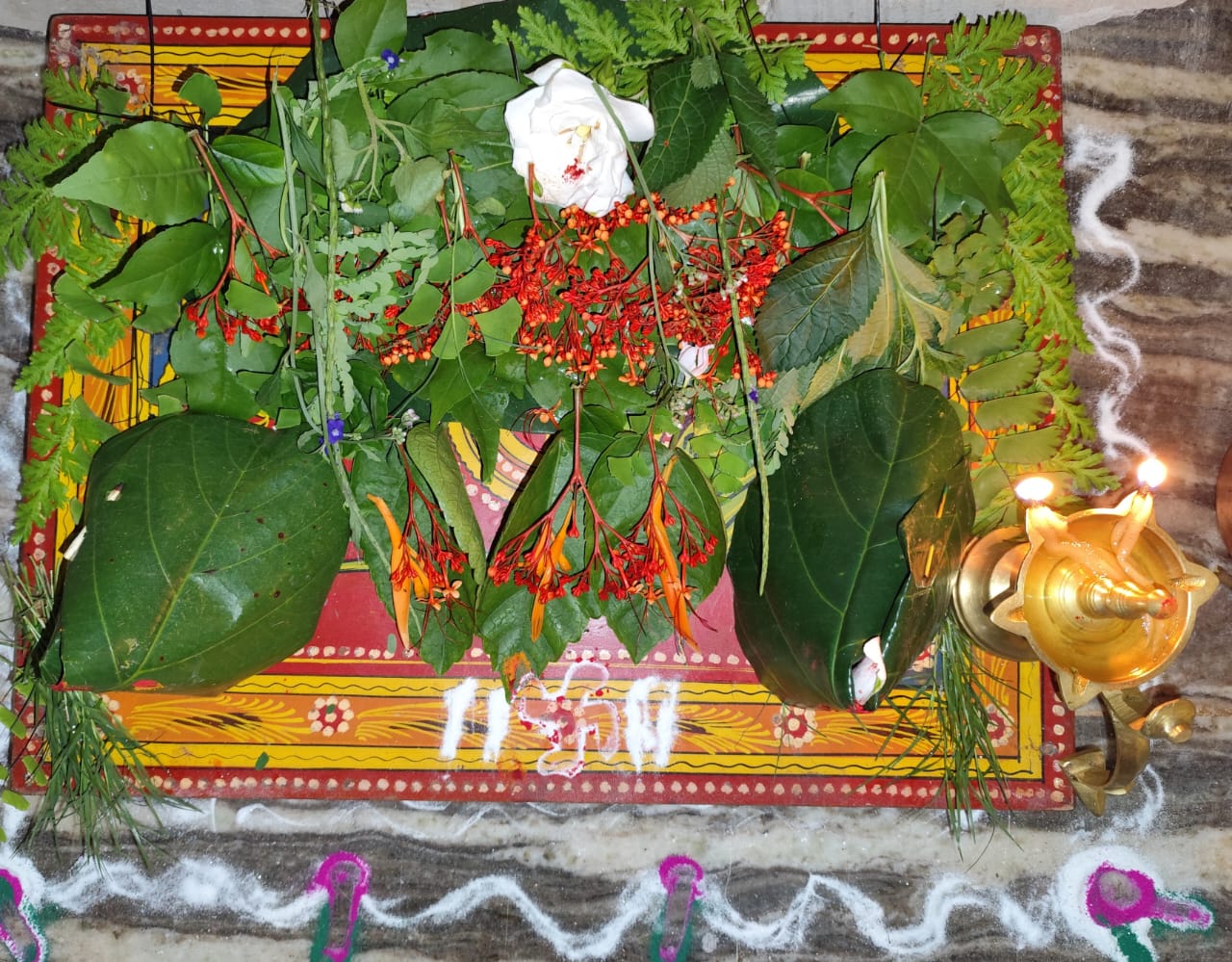
In the lush green monsoon months of Shravan (July–August), married Hindu women across Goa, Konkan, and the Western Ghats participate in a deeply symbolic tradition of worship every Sunday—locally known as Aitar or Ravivar—that blends ecological wisdom, feminine spirituality, and cultural continuity.
I began this sacred ritual after my marriage, when I moved from Chapora to Carmona, learning it firsthand from my mother-in-law, who patiently explained the significance of each wild plant used in the puja, which varies from the first to the fourth Aitar, reflecting nature’s changing rhythm throughout the month. My own mother had practised the ritual even before marriage, waking early to gather forest herbs and perform dawn pujas.
Each Shravan Sunday starts with house cleaning and bathing, followed by a walk into the fields or forests to collect sacred plants. These are arranged for a ritual that honours Surya (Sun), Shiva, Parvati, and local deities, offering gratitude for the monsoon’s life-giving rains and praying for family health and prosperity. A vegetarian meal follows—often including ros, dal-rice, and a changing sweet each week, such as mutli (steamed rice-jaggery-coconut dumplings) or patoleo (turmeric-leaf cakes with coconut-jaggery filling).
In the evening, the worshipped plants are placed with reverence near the Tulsi vrindavan for visarjan, symbolically returning the divine back to the earth. The festival-rich month of Shravan, the fifth in the Hindu calendar, also hosts major traditions like Narali Purnima and Nag Panchami, which are ecotheological in essence and resonate with the southwest monsoon cycle. Narali Purnima, for example, is a water worship ritual performed by fishing communities who offer coconuts to the sea, seeking calm after the early monsoon turbulence.
Shravan Sundays, believed to have origins in ancient Sun worship possibly influenced by Goa’s Maga Brahmins, celebrate fleeting sunlight between overcast days—poet Balakavi beautifully described this in his verses, capturing the momentary joy of sunshine and rainbows.
In Goa, women make symbolic domes of Shrivadi leaves and offer roasted jackfruit, coconut, and turmeric leaves to the sun, placing them near the Tulsi plant after rituals. Traditionally, newly married women perform this ritual in their first year to sanctify their new household, representing a post-hunter-gatherer evolution where women began preparing baked offerings to the Sun after the intense monsoon, when fuel was dry and sunlight returned—symbolising domestic security, fertility, and abundance.
Shravan is also astrologically significant, tied to the navagraha (nine planetary deities), especially Ravi (Sun), who is worshipped not merely as a celestial body but as a source of life, sustenance, and seasonal rhythm. The reappearance of the sun after long rains is a moment of spiritual celebration, aligning divine cosmic forces with women’s roles as nurturers of both family and nature—reflecting a sacred continuity between ecology, tradition, and feminine devotion.